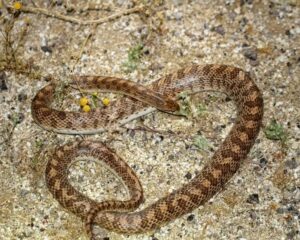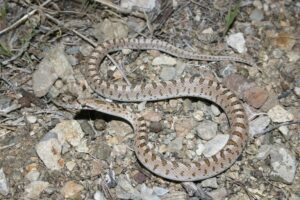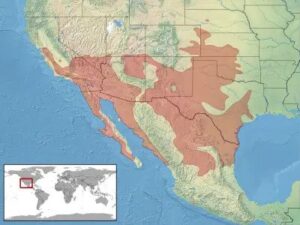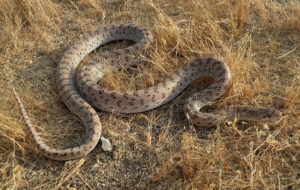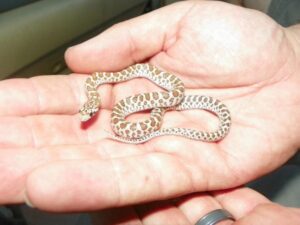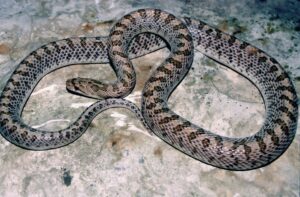The glossy snake is a medium-sized, fossorial colubrid endemic to Mexico and the southwestern United States. Its washed-out, pale look has earned it another common name, faded snake. They are mostly active at dusk and night when they forage and hide in burrows during the day.
Scientific Classifications
- Suborder:Serpentes
- Family:Colubridae
- Genus:Arizona
- Species:A. elegans
Conservation Status
Subspecies
This snake has eight recognized subspecies.
- Texas glossy snake (Arizona elegans arenicola)
- Western Mojave glossy snake (Arizona elegans candida)
- Desert glossy snake (Arizona elegans eburnata)
- Kansas glossy snake (Arizona elegans elegans)
- Chihuahua glossy snake (Arizona elegans expolita)
- Arizona glossy snake (Arizona elegans noctivaga)
- California glossy snake (Arizona elegans occidentalis)
- Painted Desert glossy snake (Arizona elegans philipi)
Description
Size
Its total size is 30-50 in (75-130 cm). The maximum recorded total size of the species is 56 in (142 cm).
Color and Appearance
Faded snakes resemble gopher snakes in their looks but are smaller. It has a narrow, pointed head and exhibits a variety of skin colors and patterns. Its smooth, shimmering skin is in shades of brown, tan, and gray, overlaid with a spotted pattern. The ventral side of the body is cream or white and unmarked. The body color often varies with the color of the soil in its native habitat.
Are They Dangerous to Humans
The gentle and calm snake is harmless to humans. When disturbed, it vibrates its tail and, on being captured, releases a musk from its anal glands and may even strike and bite. But it is non-venomous.
Glossy Snakes at a Glance
Distribution
It lives in northern Mexico and the southwestern United States, from Kansas in the east to California in the west and as far south as Texas.
Habitat
The glossy snake occurs in semi-arid grasslands, sandhills, shrublands, deserts with shrubs, rocky washes, and coastal scrubs.
They spend most of their time in rock outcrops and burrows.
Lifespan
The average lifespan of the glossy snake is 10-20 years.
Predators
Mammals, owls, and other snakes are its enemies.
Diet
They mainly eat small lizards but also take rodents and small birds.
Reproduction
Oviparous (lays eggs that hatch outside the body)
They breed in late spring and early summer. Clutches have 10-20 eggs on average that hatch in early summer. The hatchlings measure 9.8 in (25 cm) in total length.
Care Sheet
Size of the Enclosure: The size of the enclosure should be 30 in (length) x 12 in (width) x 12 in (height).
Temperature: The temperature of the tank should be 75-80°F on the cool side, with the hot spot maintained at 90°F.
Humidity: It prefers a humidity level of 50%. A small bowl of water, large enough for the snake to drink from, should be kept on the cool side.
Substrate: A mixture of loose, soft compost, copper wood, and gravel is ideal for lining the tank.
Feeding: The pets can be given a diet of frozen adult mice and lizards. The babies should be fed twice a week and the adults once a week or every alternate week.
Source
animalia.bio, calphotos.berkeley.edu, flickr.com, everythingreptiles.com, herpneb.unl.edu

